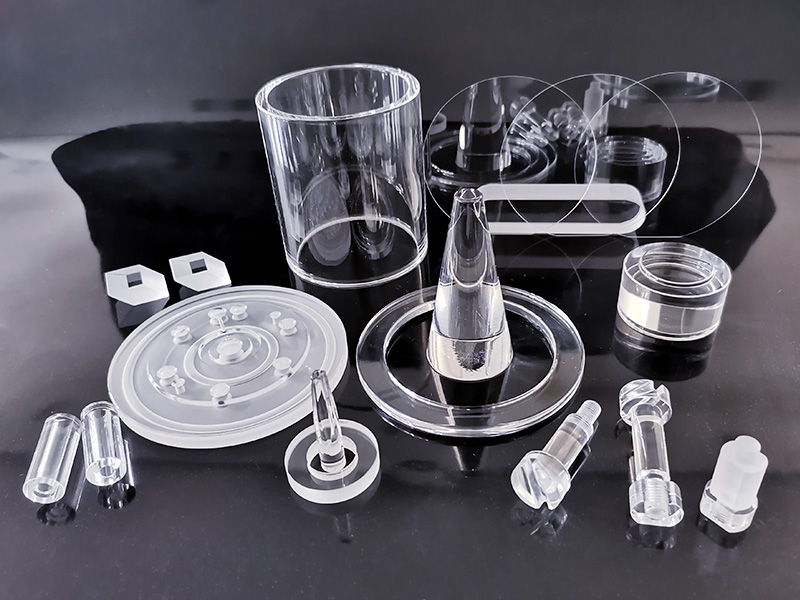Transmittance of Quartz Glass in Different Wavelength Ranges
Quartz glass is renowned for its exceptional optical properties, particularly its ability to transmit light across a wide range of wavelengths. This characteristic makes it a preferred material in high-tech industries such as optics, semiconductors, and lasers. Below, we explore the transmittance of quartz glass across different wavelength ranges and related applications.
1. Ultraviolet Region (UV)
Quartz glass exhibits exceptionally high transmittance in the deep ultraviolet region, particularly between 200 and 300 nm, reaching over 90%. High-purity fused silica, a type of quartz glass, maintains good light transmission even below 185 nm, making it crucial for applications like UV disinfection and semiconductor processing.
2. Visible Light Region
In the visible light range (400 to 700 nm), quartz glass consistently provides a transmittance between 90% and 95%. This excellent transparency makes it ideal for producing optical components such as lenses, windows, and light filters, ensuring minimal distortion for high-precision equipment.
3. Near Infrared Region (NIR)
Quartz glass also performs well in the near infrared region (700 to 2500 nm), with light transmission usually exceeding 80%. This characteristic is vital for infrared optics and optical communication systems, where handling long-wavelength light efficiently is essential. Its high durability and thermal resistance enhance its value in these applications.
4. Far Infrared Region
In the far infrared region, transmittance gradually decreases. While performance may not be as strong as in the UV and visible ranges, quartz glass still meets the needs of certain applications, such as thermal sensors and infrared detectors, due to its heat resistance.
5. Transmittance Curve of Quartz Glass
The transmittance curve of this material shows high transmission across the UV to near-infrared range, reflecting its superior optical properties. This curve indicates its capability to transmit light with minimal absorption, making it indispensable in industries requiring precision light management.
6. Applications of Quartz Glass Based on Its Transmittance
Due to its high light transmission, particularly in UV and visible ranges, quartz glass is extensively used in high-performance optical components. Key applications include:
- Semiconductor Manufacturing: UV transmittance is critical for photolithography and cleaning processes.
- Optical Devices: High visible light transmittance makes it ideal for lenses and precision instruments.
- Infrared Optics: Near-infrared transmission is essential for optical communication systems and IR detectors.
